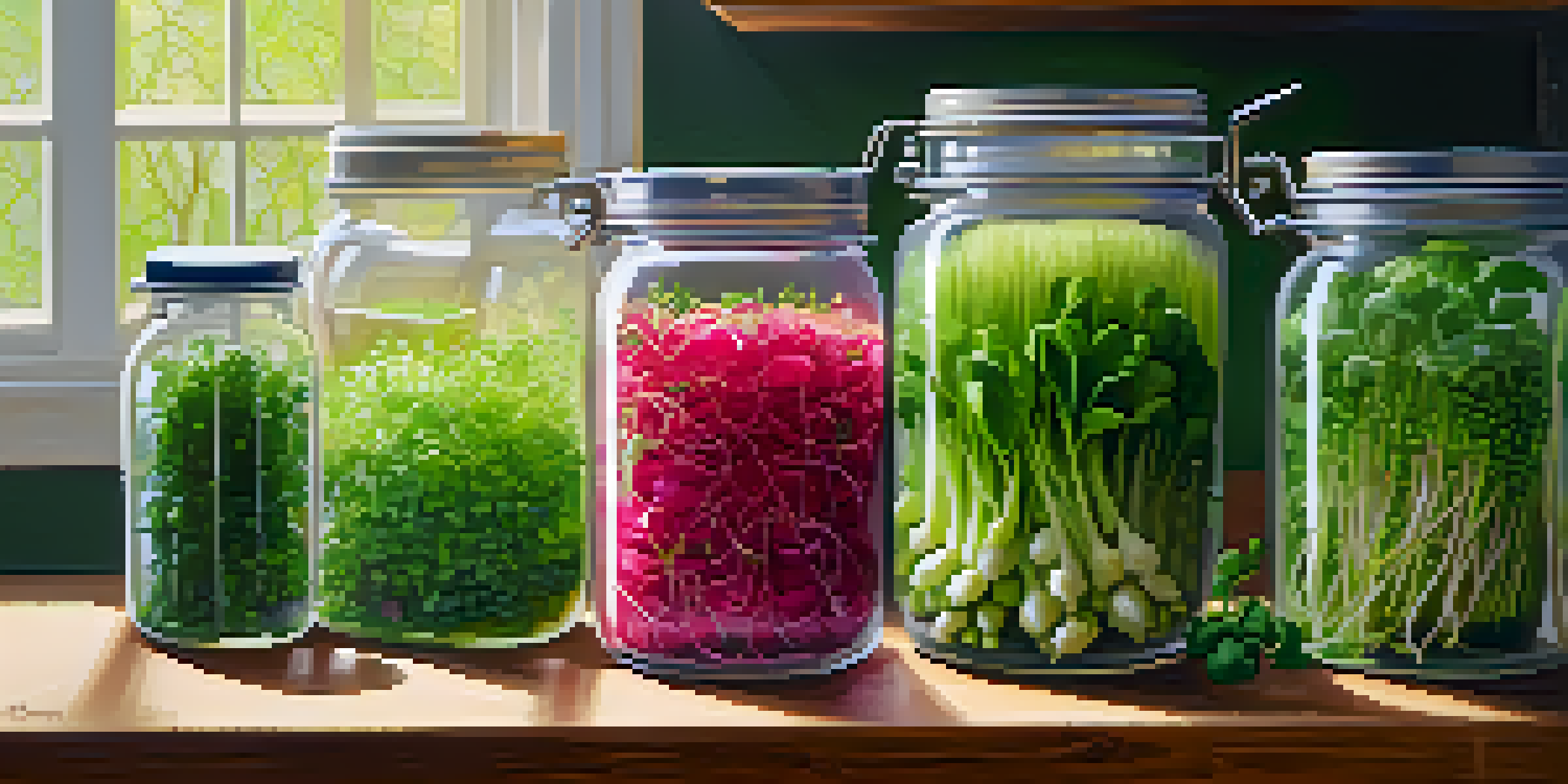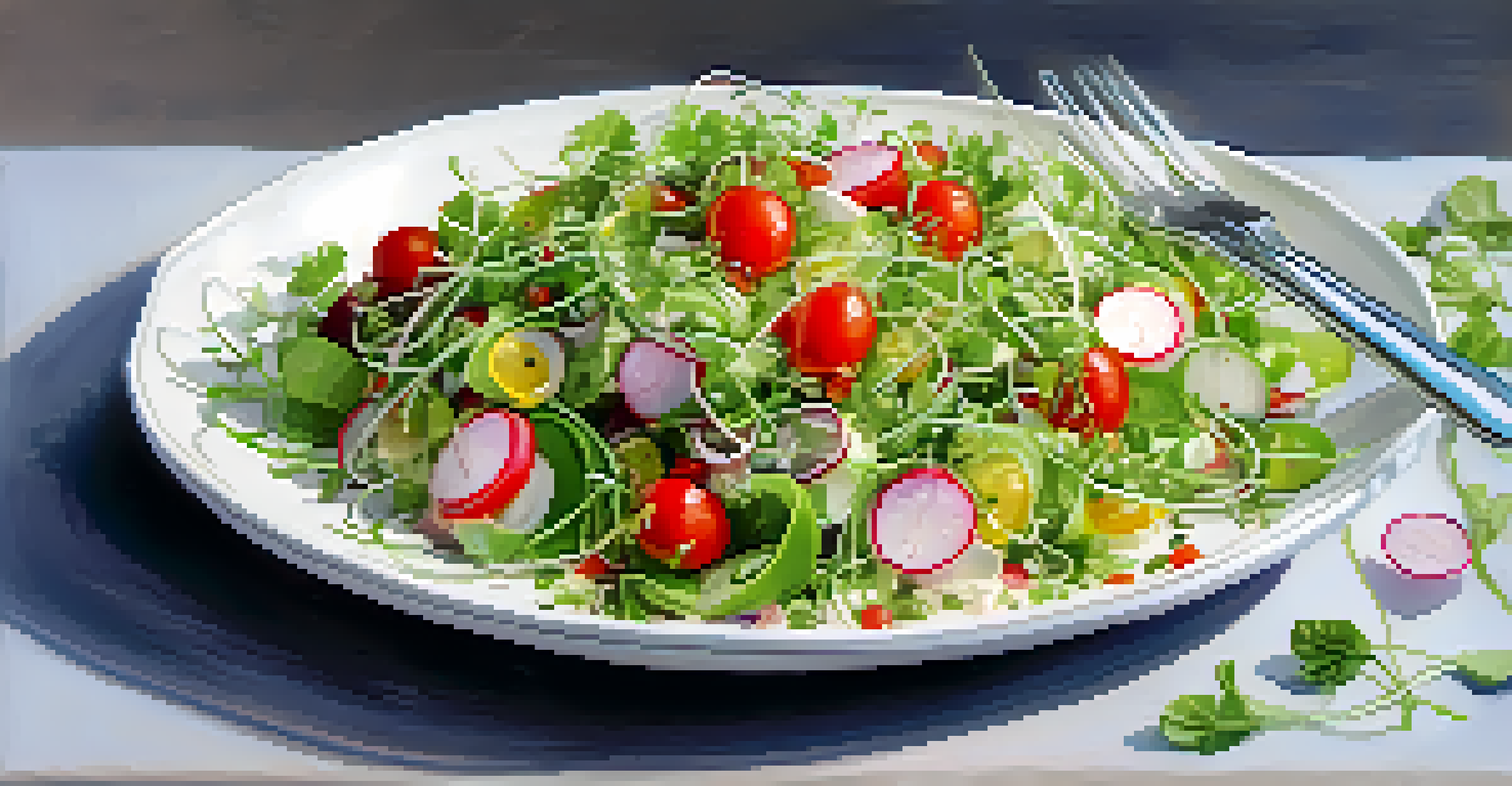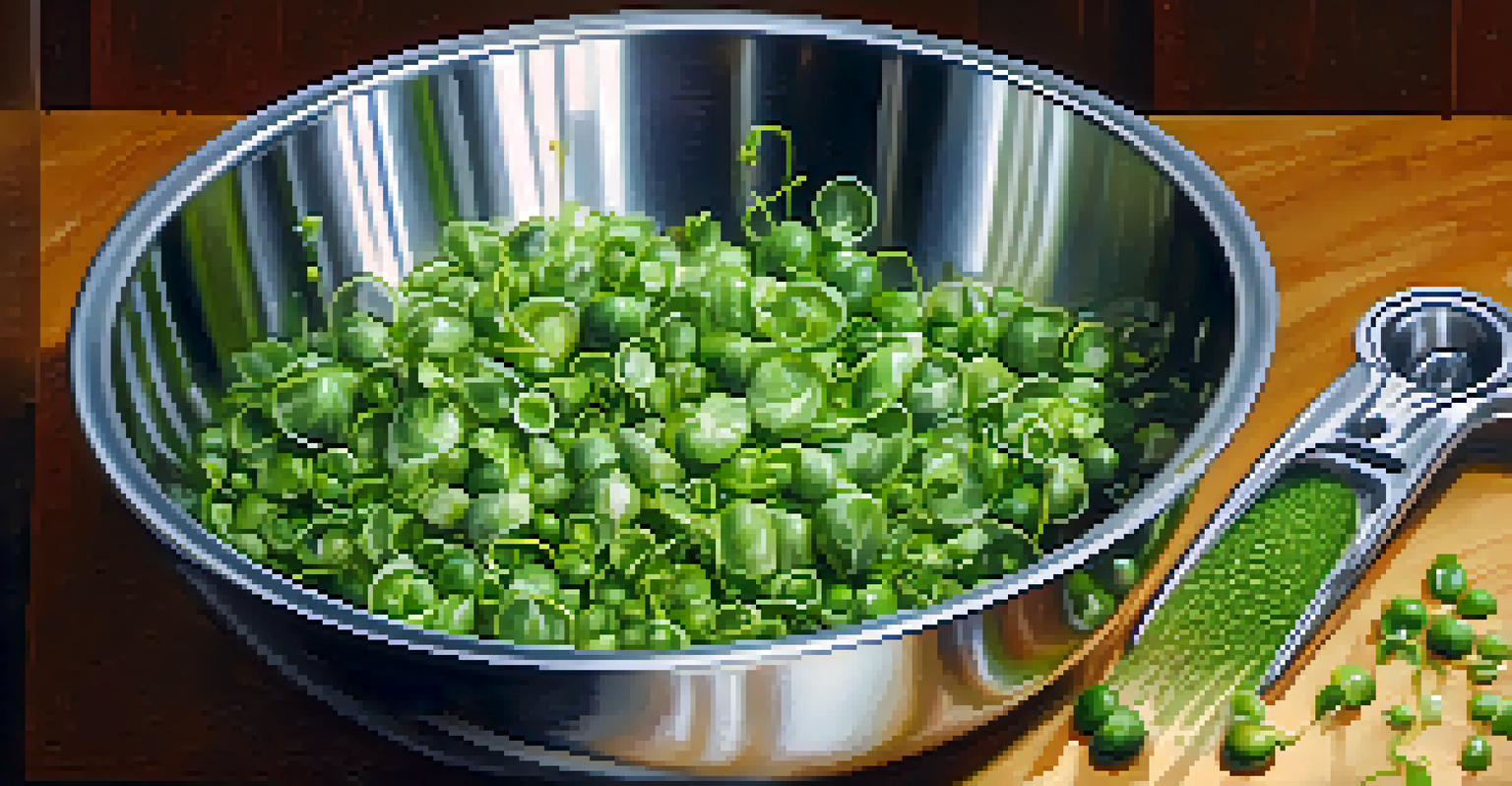How to Grow Your Own Sprouts for a Raw Food Lifestyle

Understanding the Benefits of Sprouts in a Raw Food Diet
Sprouts are a powerhouse of nutrients, offering vitamins, minerals, and enzymes that are often lost in cooking. Their high fiber content also aids in digestion, making them a perfect addition to a raw food lifestyle. Incorporating sprouts into your meals can boost your overall health and energy levels.
Let food be thy medicine and medicine be thy food.
Not only are sprouts nutritious, but they are also incredibly versatile. You can toss them into salads, blend them into smoothies, or use them as a crunchy topping on sandwiches. Their mild flavor complements a variety of dishes, making them an excellent choice for creative cooking.
Growing your own sprouts at home is both rewarding and simple. It allows you to have fresh produce right at your fingertips, and you can experiment with different types of seeds to suit your taste. Plus, it's a fun project that can engage the whole family in healthy eating habits.
Choosing the Right Seeds for Sprouting
When it comes to sprouting, not all seeds are created equal. Look for seeds that are specifically labeled for sprouting, as these are treated to minimize the risk of contamination. Popular options include alfalfa, broccoli, radish, and lentils, each offering unique flavors and nutritional benefits.

Consider your personal taste preferences and the types of dishes you enjoy when selecting seeds. For those who love a spicy kick, radish sprouts might be the perfect choice, while alfalfa offers a milder flavor that works well in salads. Don't hesitate to mix and match to discover your favorites!
Nutritional Power of Sprouts
Sprouts are nutrient-dense, offering vitamins, minerals, and enzymes that boost health and aid digestion.
It's also essential to source high-quality seeds from reputable suppliers. Organic seeds can be a good option as they are free from harmful pesticides. Additionally, check for freshness dates to ensure you're starting with the best possible seeds for your sprouting journey.
Essential Tools for Sprouting at Home
You don't need a lot of fancy equipment to start sprouting at home. A simple jar with a mesh lid or a sprouting tray can do the trick. These tools allow for proper drainage and airflow, which are crucial for successful sprouting.
Eating well is a form of self-respect.
If you're using a jar, make sure it's clean and free from any residues. Place a couple of tablespoons of seeds inside, fill the jar with water, and let them soak for several hours. After soaking, drain the water and rinse the seeds periodically to keep them moist.
Sprouting trays offer a more organized approach, allowing you to grow multiple types of sprouts simultaneously. They typically come with multiple layers, making it easy to manage different seed varieties. Whichever method you choose, ensure you have a bright, warm spot in your home for optimal growth.
The Sprouting Process: Step-by-Step Guide
The sprouting process is straightforward and can be broken down into a few simple steps. Start by soaking your chosen seeds in water for the recommended time, usually between 4 to 12 hours depending on the type. This initial soaking kickstarts the germination process.
After soaking, drain the water and rinse your seeds thoroughly. If you're using a jar, place it upside down at an angle in a bowl to allow excess water to drain. Rinse the seeds at least twice a day to keep them moist and encourage healthy growth.
Simple Home Sprouting Process
Growing sprouts at home requires minimal tools and is an easy process that engages the whole family.
Within a few days, you'll start to see tiny sprouts emerging. Continue rinsing and draining daily until the sprouts reach your desired length, usually around 3 to 7 days. Once they're ready, give them one final rinse and enjoy them fresh in your meals!
Caring for Your Sprouts During Growth
Caring for your sprouts is crucial to ensure they thrive and develop the best flavors. Keep them in a warm location with indirect sunlight; too much direct light can dry them out. Monitoring temperature and humidity will help create an ideal environment for growth.
Make sure to continue rinsing your sprouts regularly to prevent mold growth. If you notice any unusual smells or colors, it might be best to discard them and start over. Healthy sprouts should smell fresh and earthy, indicating they’re growing well.
As your sprouts grow, you may also want to thin them out if they become overcrowded. This will allow each sprout to receive enough light and nutrients while promoting optimal growth. With proper care, you can enjoy a bountiful harvest of fresh sprouts!
Harvesting and Storing Your Homegrown Sprouts
When your sprouts have reached the desired length, it's time to harvest! Use clean scissors to snip them off just above the root. Rinse them thoroughly in cool water to remove any seed hulls or debris, ensuring they are clean and ready to eat.
After rinsing, you can use your sprouts immediately or store them for later use. Place them in an airtight container lined with a damp paper towel to help maintain moisture. Keep them in the refrigerator, where they can stay fresh for about a week.
Versatile Uses for Sprouts
Sprouts can be easily incorporated into various dishes, enhancing flavor and nutrition in salads, wraps, and smoothies.
Remember to check your stored sprouts regularly, as they can spoil if not cared for properly. If you notice any sliminess or off smells, it's better to err on the side of caution and discard them. Fresh sprouts are best enjoyed right after harvesting!
Incorporating Sprouts into Your Raw Food Meals
Now that you've successfully grown your sprouts, it's time to enjoy them in your meals! Sprouts can enhance the nutritional value of your dishes and add a delightful crunch. Toss them into salads, blend them into smoothies, or mix them into your favorite dips for added texture.
For a quick and easy meal, consider making a wrap with your favorite veggies and a generous handful of sprouts. The freshness of the sprouts complements other raw ingredients beautifully, making every bite satisfying and nutritious. You can also use sprouts as a topping for soups and stews, adding a fresh element to warm dishes.

Don't be afraid to experiment with different combinations and recipes. Sprouts can be a versatile ingredient in many cuisines, allowing you to explore global flavors right in your kitchen. Enjoy the journey of discovering new ways to incorporate your homegrown sprouts into your raw food lifestyle!